More and more Americans are walking for exercise. In fact, the number of adults walking for transportation, fun and exercise increased for the fifth consecutive year in 2021. In total, 60% of adults are walking for aerobic activity. And there’s a great reason why they should be. The CDC reports that adults need at least 2 ½ hours of fitness in the form of aerobic activity every week. Good news – that aerobic activity can be something as simple as a brisk walk!
For an average-sized adult, a 30-minute stroll can result in up to 150 calories burned walking. Learn the benefits of walking for exercise and health and get some tips on the best ways to get started.
How Many Calories Do You Burn Walking?
The number of calories burned walking depends on your weight, the distance you walk and pace of your walking. For example, a 170 lb. person walking at a 3 mi/hour pace for 30 minutes may burn about 142 calories while a 130 lb. person walking the same distance at the same pace may only burn 108 calories.

Is Walking Good Exercise?
Are you wondering “is walking good exercise?” The answer is a strong yes. Walking is a great form of exercise in addition to just burning calories. Walking as few as 30 minutes a day can result in health benefits such as a lowered resting heart rate. Walking can also help you:
1. Improve your balance. According to Harvard Medical School, one of the main benefits of walking for exercise is improving your balance and coordination. Create a walking plan to get you in the habit of adding a brisk stroll to your exercise routine. You’ll develop lower-body strength, one of the key ways to ensure you maintain your balance at any age. Start small and build your way up.
2. Lift your spirits. Living a healthy lifestyle includes finding ways to improve your mental health. According to research by Dr. Michael C. Miller, even something as simple as regular walks can increase blood flow to your brain and improve your mental acuity and mood significantly. In fact, a study found that for individuals with major depressive disorder, those who walked for 30 minutes had more positive feelings of well-being and vigor compared to those who rested quietly for 30 minutes. Why not take the dog for an extra walk during the day? Walking for exercise will make him just as happy as it’ll make you.
3. Maintain your weight. According to Mayo Clinic, you could burn 150 calories by taking a brisk 30-minute walk – just enough to burn off the calories from the cookies you had earlier. So, if you’re trying to keep your weight down, don’t forget to incorporate a walk into your daily routine. You can’t get the benefits of walking for exercise if you aren’t going for a walk regularly.
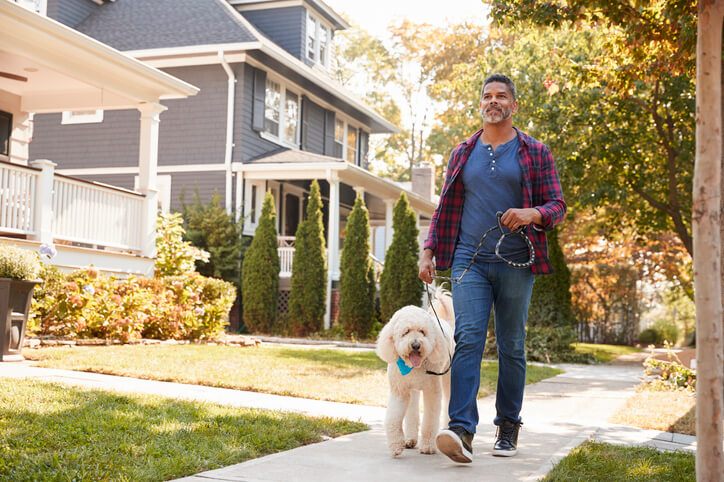
5 Tips on Walking for Exercise
The safer and more comfortable you are, the more enjoyable and beneficial your walking exercise routine will become. So, before you throw on your good walking shoes and head out for a stroll around the block, look at these five tips on walking for exercise.
1. Choose a Walking Exercise App
Most people prefer walking outside as opposed to on a treadmill. But there is one distinct advantage to a treadmill and that is its ability to measure and quantify your workout. Treadmills can track your distance, pace, elevation and calories burned. Fortunately, there are GPS apps you can download on your smartphone that will provide comparable data.
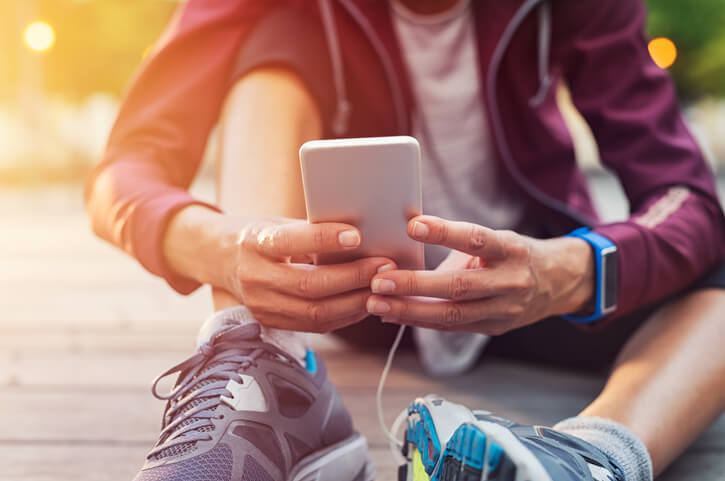
MapMyWalk is a popular app for walkers, runners and hikers. It can track your distance, speed and the route that you take. This can be incredibly helpful if you get lost, as it allows you to trace your steps back. You can also save your routes and race against your previous walks to try to improve your completion times. Additionally, you can upload the data from MapMyWalk to other apps such as FitBit and Jawbone.
Even if you don’t plan to use an app, you should still always bring your mobile phone with you when walking. You can use it to call for help in an emergency, check the weather or refer to GPS if you get lost. Be sure to get to a safe place, away from traffic before using your phone.
2. Dress for Comfort and Safety
Choose your clothing and footwear wisely. Comfort and safety are likely the two most important features to look for when dressing for a fitness walk. Of course, it’s also important that you’re happy with the way you look. If you’re walking through your neighborhood and wearing clothes that make you feel awkward, you’re probably not going to enjoy your walk. You may even be more inclined to skip your walks if you’re not happy with your clothing.
Good Walking Shoes or Walking Sandals?
You’re going to want to wear a pair of comfortable, good walking shoes, walking sandals or running shoes. Good walking shoes should be comfortable and supportive with appropriate arch support for your feet. If you prefer walking sandals, make sure to find a pair with adjustable straps and a shock-absorbent sole for maximum comfort.
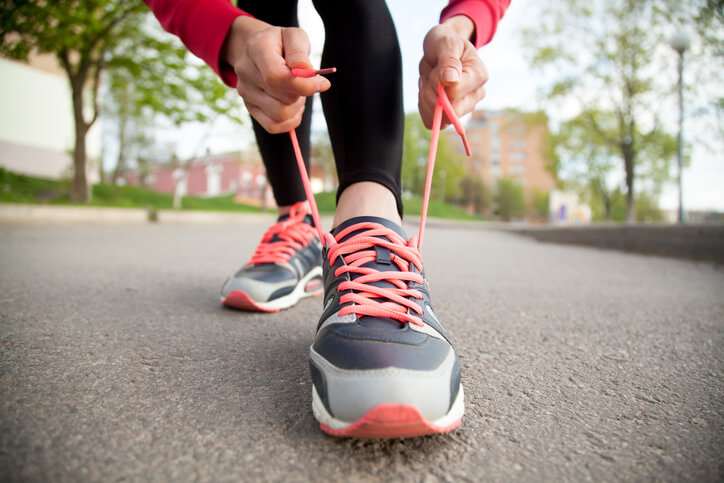
Your walking shoe selection should depend on whether you’re walking on streets or off-road trails. If you’re walking on the streets, you want a well-cushioned shoe that is lighter and has a lower ankle. Asics Gel Kayano is an example of a popular shoe for street walking. If you’re walking on off-road trails, the Merrell Chameleon Wrap Salm Gore-Tex XCR is an example of a good walking shoe that offers durable soles and a supportive structure. In addition to a good pair of shoes, consider a reflective rain jacket. Proviz Reflect 360 Jacket looks like a normal, water-resistant windbreaker. But it’s made entirely out of reflective material. This way, vehicles can easily spot you when walking at night or consider using a reflective vest.
3. Check the Weather and Sunset Time
Of course, the apparel you wear for your walk will also be dependent on the weather and time of day. Check the hourly forecast before going on your walk. This is especially important in the wintertime, as temperatures can drop dramatically within short time periods. Walking during a snowstorm can be incredibly dangerous due to low visibility and dangerously slippery conditions. In the summertime, your area could have quick moving storms. It’s also important that you check the time of sunset. You can use the MapMyWalk app to help determine how long you will be on your walk. You can then choose a start time that gets you back safely before dark. Be sure to wear your reflective jacket and bring a flashlight in case you’ll be walking after or near sunset.
4. Be Aware of Traffic During Your Walk
One of the biggest dangers for walkers is moving vehicles. The following tips can help you stay safe and avoid accidents.
- Cross streets at crosswalks and intersections and abide by pedestrian traffic lights.
- Always wear a reflective jacket and carry a flashlight when walking at night.
- Stay on the sidewalk if possible.
- If there is no sidewalk, stay close to the curb and always walk facing traffic.
- Don’t fidget with your smartphone or device while walking. If you need to check your GPS, walking app or make a phone call, find a safe place off the road to do so.
5. Prepare for Walking Trails
Walking on trails requires some of the same safety protocols as walking on streets. There are, however, additional safety tips that you should follow. Here’s a quick guide to trail walking safety:
- Stay to the right when walking on trails. The right side of any lane has become the universally accepted “traveling” lane in the United States. This will allow cyclists and runners to easily pass you.
- Carry your ID to help in the event you are involved with an accident or medical emergency.
- Don’t listen to headphones as these will make you less aware of nearby hazards and animal life.
- Stay connected by letting people know when and where you will be walking. If possible, bring a friend.
Walking for exercise can be a fun and easy way to improve your health. It’s also a great way to get fresh air and see the sights of an area. Walking for exercise is a fun partner or group activity. Use your common sense and our helpful safety tips and get out there – alone or with others – and enjoy this relaxing, low-intensity way to exercise.
What do you do to motivate yourself to go for a walk? Let us know in the comments below.


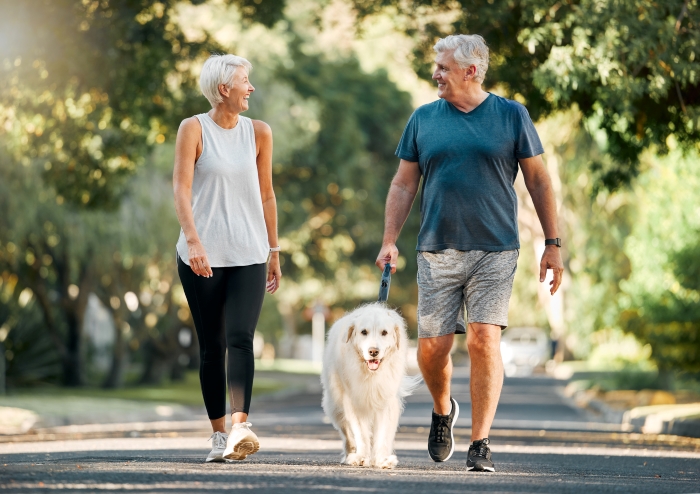
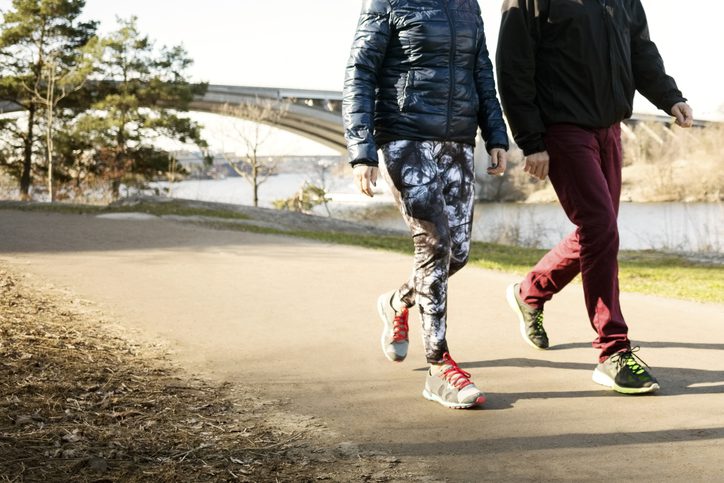

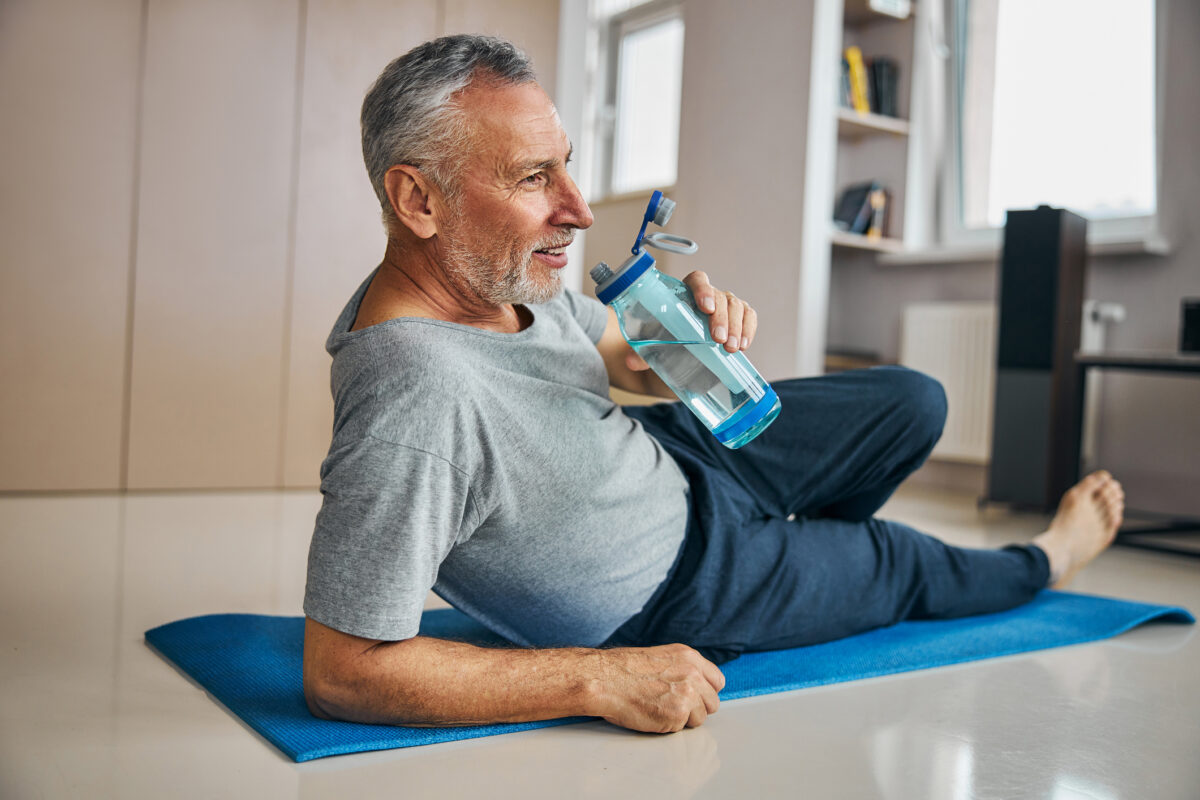

The dog is the top motivator. Husbands are pretty good, too. The route? REVERSE direction helps, too. Literally seeing your neighborhood from the opposite angle makes it more interesting. Find a safe park route nearby. Bring water. Honor your personal style…introverts may want to be solitary but extroverts want to chat with a fellow walker or use the time on their phone to catch up with a friend. Audible books make the time go faster.
My dog has to be walked daily to rehab her leg surgery and it makes her happy. but I have to judge how far she can go each day without hurting her
recovery.
Because I have asthma, I am very slow, but I love to hike in the mountains not far from me. In the summer when it is almost 100 degrees here, it is often 78 degrees in the high country. Many trails prohibit dogs so I always look for places that do not. It is great to identify new wildflowers, learn about geological formations, spot trout in the streams, and see wildlife. In the winter I take up cross-country skiing and enjoy the cold and snow.
Just being out in nature and hearing the sounds of the birds etc. and having my dog as my partner.
Went to Asics site after clicking on the Asics gel quickwalk 3, could not find them anywhere.
Now what?
Did I do something wrong or did you?
As a former runner who prefers not to run anymore I still have those competitive urges. I simply was a casual walker until I installed the Adidas running (walking app) on my phone. Now my driving force to get me outside is to better my time from the day before. Only months away from 71. years old I am now down to 12:24 minutes per mile for my five mile walks outside at an average pace of 4.8 to 4.9 miles per hour. Walking has energized my recent retirement and my only fear is that I might injure myself so that I can’t walk.
Get out and exercise. You will feel better the rest of the day!
I have been doing a daily walk since I retired 10 yrs ago. I’m 77 next week. I’m diabetic, and have had heart failure since before retirement. I normally walk about 1 mile anymore in one stretch. I have gone from 2112 lbs to 180 lbs. My blood pressure stays normal with meds, and the one benefit I have noticed is the drop in blood sugar that occurs when I walk. It makes a difference overnight and I have to plan accordingly. I urge everyone who can to walk. Start slowly and yes, your lower back muscles may ache at first, but it goes away with consistent effort. One other thing is dress for the weather. In winter have a good quality down jacket and related gear. I wear insulated jeans in the winter. Look at them as an investment into your health. Long johns are an option. DNK
Always out at first light in the morning.
I am a 77 year old man and walk my dog around 2.5 miles a day year round. Live with wife in Bangor, Maine. In the winter walk is reduced to about 1.5 miles a day.
I have a tip for you. I go to aquatic pool therapy. For me this is the best. I am disabled with severe back pain. The pool water temperature is 90. This exercise takes my pain away.
Morning walking shady trails in my area is my workout enjoying the nature and feeling blessed for the energy to keep on doing it; and It is filling my spiritual needs to remain grateful in spite of these critical times of Covid-19. I feel.great when I get home.
S.Szabo
Spring, Tx
Alberta is spot on. Not only are dogs great companions, they need exercise and motivate you to GET OUTSIDE.
Losing my dog in May made my walks tedious and an effort, I made excuses to not walk; am taking care of my “grand puppies “ and look forward to walking them a few times a day, they are little so it’s about a mile each time we are outside, but we are all enjoying ourselves.
I prefer first thing in the morning – listening to a podcast or talk.
Set a definite time. Consider it an appointment.
Your article is good . . . for most people. But for those of us with osteoarthritis (deterioration of the padding between bones), it does more harm than good. To your knees and hips in particular. I also have deterioration in my thumbs, jawbone and back.
The bone-on-bone situation, every time one puts pressure on those areas, wears away bones even faster and causes constant pain. It is like scraping a jagged rock along a concrete sidewalk. Both the rock and sidewalk will deteriorate.
I have a friend who is obsessed with walking. She couldn’t understand how I could believe otherwise. Even when my knee buckled and I went down while trying to keep up with her some years ago..
And now she has had replacement of both knees and one hip (so far). And the discomfort of the rehabilitation that goes with it.
Walking is not good for everyone!
wanting to get healthy
Until the Covid-19 pandemic I walked 2 Miles a day, 5 days a week. When I walk alone in the morning I can walk a mile in 15 minutes. When walking with my walking partners it takes 45 minutes to do 2 miles. I have to walk on a track. If I do concrete one of my knees seems to bother me. I think I have been introduced to Mr. Arthur. By the way I’m 77 years young Love to go to gym after my walk 3 days a week. I’m debating if I’m returning to the gym with the virus going on. Not sure it’s safe
Just had a heart attack. It just “happened”, like drowning. I was an ambulance jockey in San Francisco in the 80’s and that likely saved my life. I recognized the symptoms, even though my mind still had to go through the process of denial, and drove myself to the ER. (Don’t do that, call 911 if you’re able)
Walking is no longer optional, nor is diet.
Period.
Get a dog.